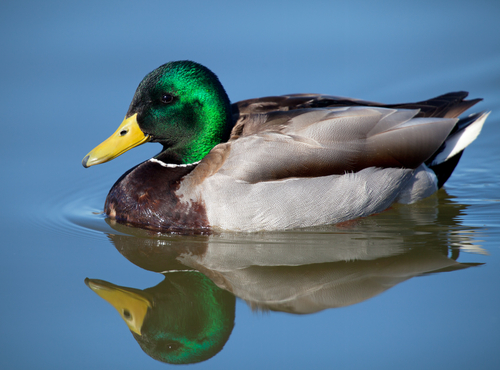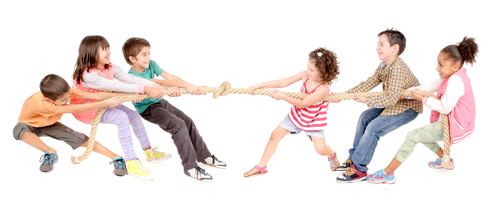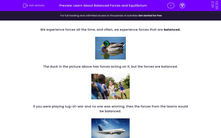We experience forces all the time, and often, we experience forces that are balanced.

The duck in the picture above has forces acting on it, but the forces are balanced.

If you were playing tug-of-war and no one was winning, then the forces from the teams would be balanced.

If a plane travels at a constant speed, in a straight line, then the forces on the plane are balanced!
Let's learn more about balanced forces.
We'll start with an important key term in this topic - equilibrium.
Equilibrium means that the forces acting on an object are balanced. In other words, the different forces on an object cancel out because they are the same size, acting in opposing directions.
The word comes from the Latin terms, 'aequi' (equal) and 'libra' (balanced).

Let's look back at that example of the duck from earlier.

This duck is not moving forwards or backwards and is floating on the water. There are two forces on the duck - the weight of the duck, acting downwards, and the upthrust from the water, acting upwards.
The duck is in equilibrium.
How do the two forces on the duck compare?
The forces are acting in opposite directions.
The forces are the same size (same number of Newtons).
What about the tug-of-war game?

Both teams are pulling on the rope. The teams are pulling in opposite directions.
Each team provides an equal pulling force.
The pulling forces cancel each other out.
Let's imagine that the team on the left are pulling on the rope with a force of 500 N. What would the force from the team on the right be?
The team on the right also pull with a force of 500 N, in the opposite direction. The forces are in opposite directions, and they have the same size. They cancel out and the forces on the rope are balanced.
What happens to an object's movement when it is in equilibrium?
If the forces on an object are balanced, then the motion of the object will not change.
If the object is stationary (not moving), then it will continue to be stationary.
If the object is already moving, then it will continue to move at a constant speed. The motion of the object will not change.
Now that we have learnt about balanced forces, let's test our understanding with some questions!









